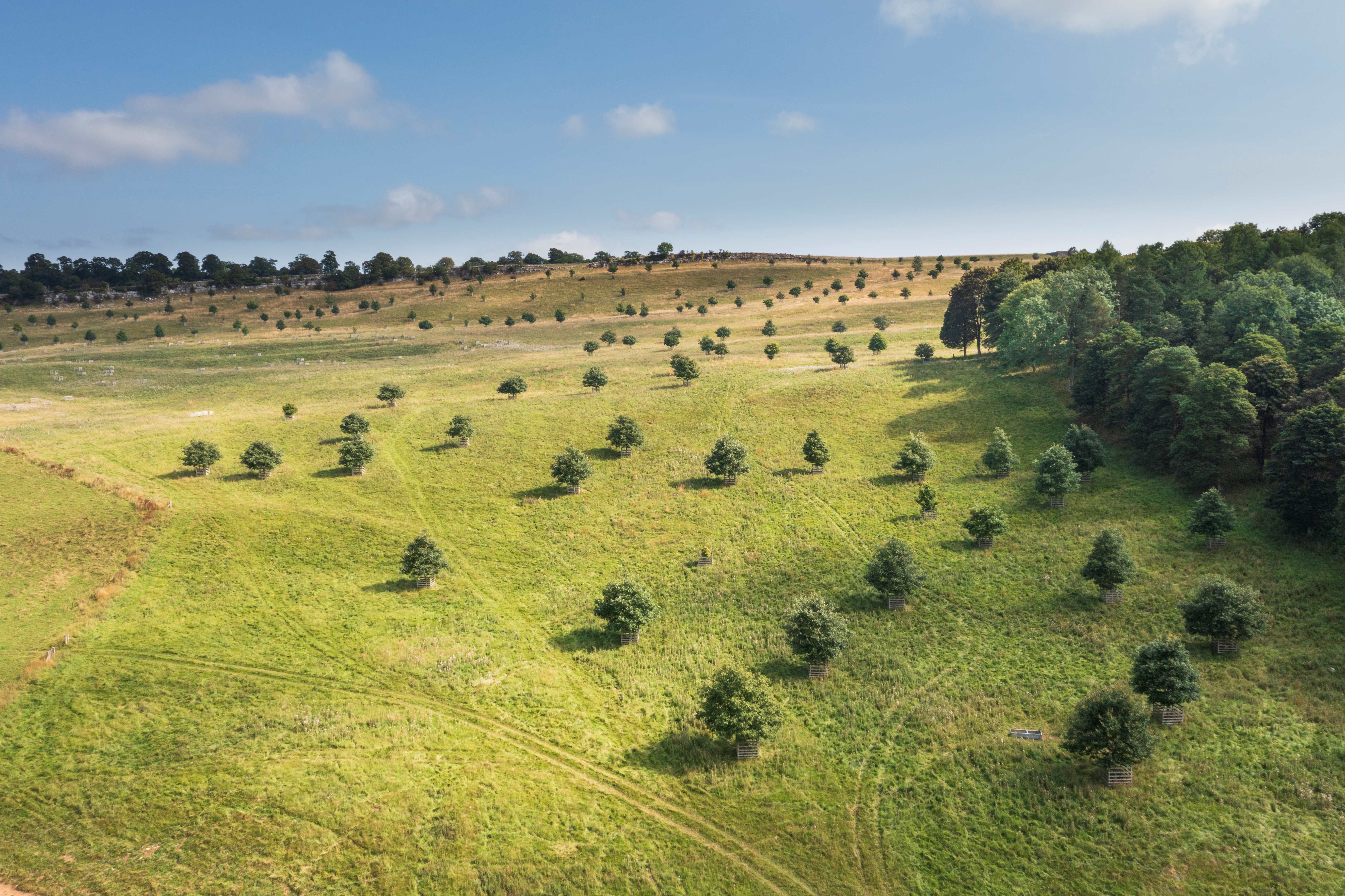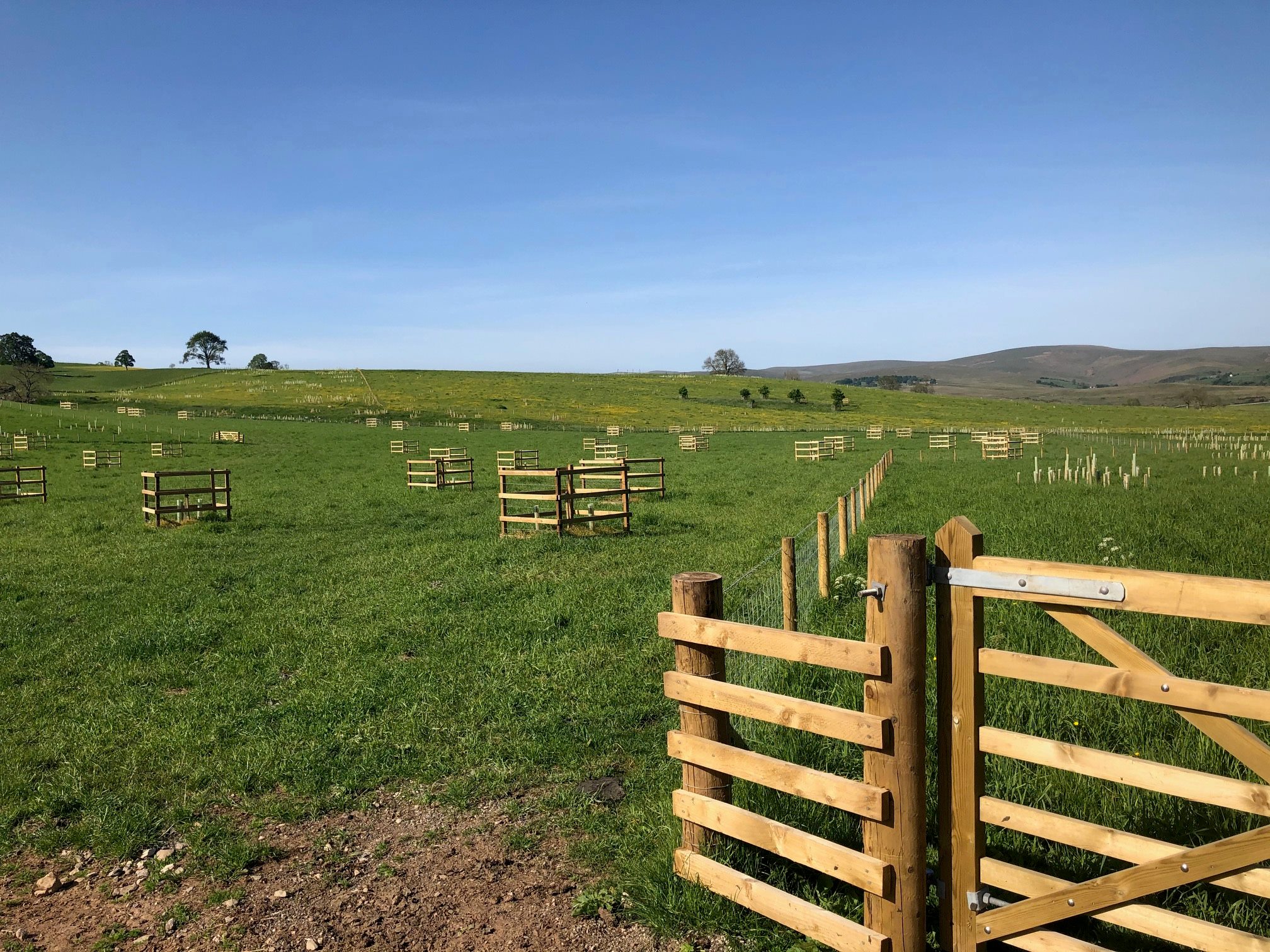The UK’s land is under increasing pressure - not just to produce food, but also to restore nature and build climate resilience. But how do we strike the right balance?
While this blog highlights some key considerations, land use change is a complex, nuanced topic. It involves a wide range of stakeholder perspectives, all of which bring valuable insights to the conversation. Read on to explore some - but by no means all - of the emerging ideas and approaches shaping this conversation.
What is land use change?
Considering the simplest definition, land use change refers to how human activities alter our natural landscape - from building homes and growing crops to creating recreational spaces and planting forests (1). The concept has since been further developed as we understand the intrinsic link with our climate requirements to meet net zero targets, as well as enhancing biodiversity and improving our water resources, shifting the question from, “How do we use our land?” to “How can we use it sustainably to meet all competing demands?”.
While this is a wide topic, food security is a key consideration. In this context, food security refers to maintaining agricultural land sustainably while restoring and reforesting other land areas for environmental benefits.
Why should food security be part of land use change discussions?
Agriculture is the largest single land use in the UK, covering 63.1% of land use in England, 80% in Wales, 75% in Northern Ireland, and 69% in Scotland. While a large portion of agricultural products are exported, the remaining products help to improve national food security; creating a buffer against fluctuations in international markets (2).
As the UK progresses toward achieving net zero goals, the pressure on land increases. Balancing the removal of agricultural land for alternative land use with the sustainable intensification of the remaining agricultural land will need to be done delicately due to the risk of potentially seeing a decline in national agricultural output.
Farmers are often at the centre of this balancing act, yet they’re frequently expected to meet broad policy ambitions without sufficient on-the-ground support. While recent findings show that farmers are willing to contribute to environmental targets, there is growing disengagement due to the disproportionate responsibility placed on the agricultural sector to meet emission goals (3).
Farmers today face growing demands - from food production that meets market and consumer needs, to delivering environmental outcomes like carbon reduction and biodiversity gain. The need to produce affordable food, meet supply chain expectations, and manage land for climate and biodiversity outcomes can feel like competing priorities. However, many of the practices that reduce emissions or restore ecosystems also build farm resilience. These approaches can support productivity over the long term, help buffer against extreme weather, and create opportunities for diversification. In this way, nature-positive farming can become a strategy not just for environmental stewardship, but for building resilience into the farming business structure.
The competing demands of our land are not limited to agriculture and carbon storage; they also include onshore wind, solar, recreation, housing development, waste processing, and industry infrastructure, among other things (4). The key challenge is how to find balance between competing land use demands while maintaining and growing national food security.
What is already being done?
Scotland has been leading the way in addressing land use change since the 2009 Climate Change Act (5). Since then, Scotland is now on the third iteration of the Land Use Strategy which emphasises the need to “balance other demands we make of our land” (6). The strategy highlights the significant scale of land that must transition from current uses to peatland restoration and woodland creation, while also ensuring space for essential activities like food production. It reinforces the need to find a careful balance in what is recognised as a complex issue.
More recently England released the Land Use Consultation which explores commitments to restore nature, support food production, improve climate resilience, and deliver new housing infrastructure under government support and change. Similar efforts have been seen in Northern Ireland where a roundtable discussion was hosted in 2023 (7), and in Wales which published the Sustainable Land Management Framework in the same year.
There is growing recognition across the UK of the importance of balancing land use change with food production to ensure future net zero targets are met - with DEFRA stating that land use change and food security are seen to be hand in hand (8).
What does balance between these demands look like on the ground?
Agroforestry offers farmers and land managers a powerful tool to balance food production with environmental stewardship. Agroforestry can come in many forms and can be implemented alongside many current farming practices. Silvopasture (9), where trees are planted among grazing animals, can boost livestock welfare while reducing emissions and providing potential diversification of income depending on what species are planted (10).
We’ve seen this in action at Lowther, where we’ve supported several Woodland Carbon Code projects that take an innovative agroforestry approach. Their woodland vision features strategically spaced compartments of planting, creating a mosaic of habitats that enhance biodiversity and deliver meaningful environmental benefits. For example, Lowther 3, aims to recreate traditional pasture woodland by establishing a large, low-density native broadleaf woodland spread across larger gross areas and surrounded by fields. The design includes clump planting - compartments of trees spread across a wider landscape - surrounded by pastureland. This approach supports wildlife and provides shade for cattle.
Meanwhile, silvoarable systems involve growing crops between tree rows; protecting plants from adverse weather and supporting biodiversity (11). In both systems, the trees would provide co-benefits to the agricultural product while sequestering large amounts of carbon for overall environmental benefits.
Another popular method for balancing food production and carbon sequestration is increasing the presence of woody hedgerows (12). While still part of an agroforestry approach, this method increases the biomass and presence of trees around the edges of productive land rather than having trees directly in the field. This not only helps with carbon sequestration but also improves overall biodiversity, benefiting arable crops and creating valuable wildlife corridors that connect fragmented wooded areas (13).


To explore the potential of agroforestry further, take a look at our earlier blog: ‘What an agroforestry code could do for British farmers’.
What other balance can be found between land use change and food production?
Renewable energy has been a large part of the planning and consideration in the development of future land use change. It is another way for farmers and producers to reduce their on-farm carbon footprint if they can invest in the technology or earn income through the leasing of some land to a third party for the development of wind turbines. Similarly to planting trees on grazing land, wind turbines can often be built on grazing or unproductive land (14). This could provide an economic benefit to farmers by receiving payment for generating clean energy or payment from developers for the leasing of their land (15). Although this solution is not entirely simple - only certain areas across the UK will qualify for installation due to windspeed requirements or other factors.
Just as leasing land for renewables can support farm incomes, timber production may also play a role. Depending on tree planting objectives, well managed trees on farms can provide an income stream through timber production whilst also contributing to UK timber supply goals. Timber potential can be integrated into agroforestry systems - particularly where species selection and spacing are designed with future productive woodland in mind.
Finding the Balance: Next Steps
Balancing the multiple competing demands on the UK’s limited land area will be an ongoing challenge as we progress towards a more sustainable future. The examples explored here offer just a glimpse of the broader conversation around UK land use change. There is no single solution - progress will depend on continued research, collaboration, and adaptation. The consultation framework and evolving land use change strategies are important steps forward to bring together the perspectives of experts and those who are responsible on the ground for the implementation of these actions. Listening to all voices - farmers, policymakers, and businesses alike - can create land use strategies that strike the right balance; helping to meet our climate goals while securing the UK’s food future.
Get in touch if you want to discuss this topic with us.
Sources
1. Definition - Land Use Change
2. Overseas Trade, Gov.UK
3. Why scrapping net zero could help tackle climate change, Farmers Weekly
4. Land use - getting the best from out land: Strategy 2021 to 2026, Scottish Government
5. Landscape and outdoor access, Scottish Government
6. Achieving sustainable land use, Land Use - getting the best from our land: Strategy 2021 to 2026, Scottish Government
7. A Northern Ireland land use framework, Food, Farming & Countryside Commission
8. Government launches "national conversation" on land use, Gov.UK
9. Silvopasture agroforestry systems, Food System Change
10. How improved livestock health can reduce GHG emissions, Heath for Animals
11. Silvoarable, Agroforestry Research Trust
12. Why trees in hedges improve arable farm landscapes, Farmers Weekly
13. Hedgerow biodiversity, Hedgelink
14. Wind turbines and agriculture: A sustainable future or a complicated coexistence, AgTechDigest
15. Onshore wind turbines - prospects and advice for farmers, Farmers Weekly
/public/692/dd7/e0c/692dd7e0ca905474952387.jpg)
/public/68f/f39/36d/68ff3936defff352354004.jpg)
/public/68d/a53/023/68da530233e97825782884.jpg)